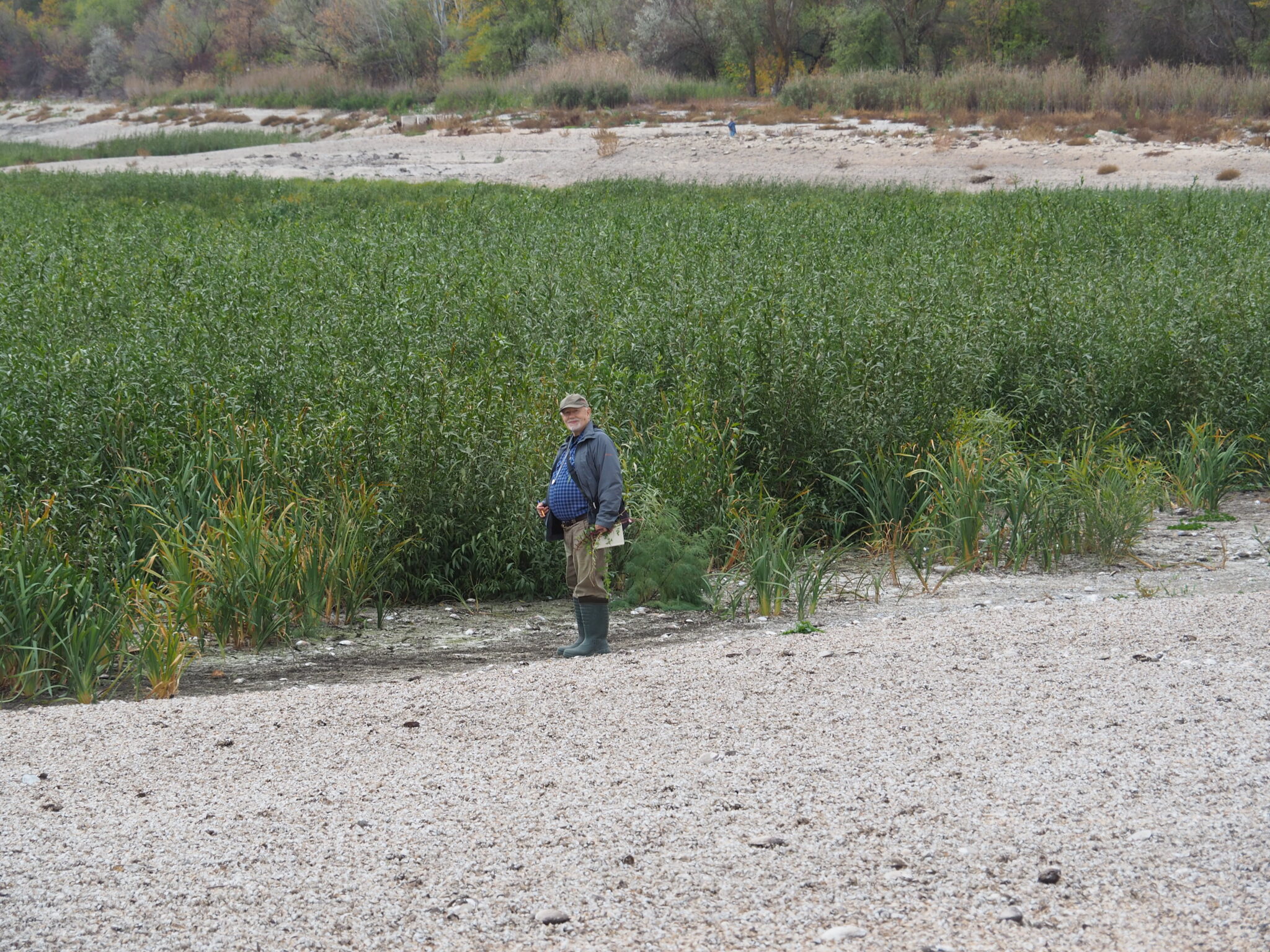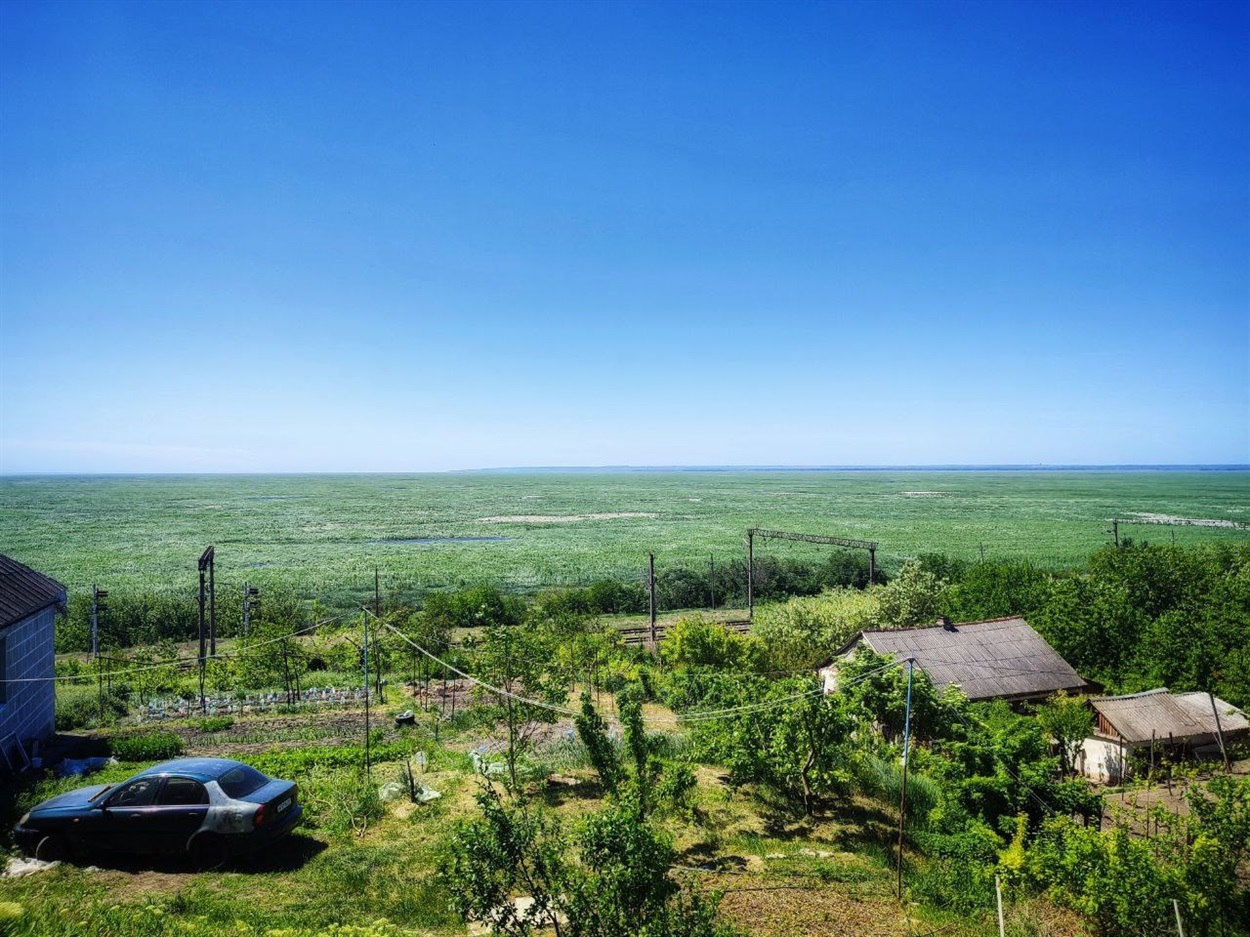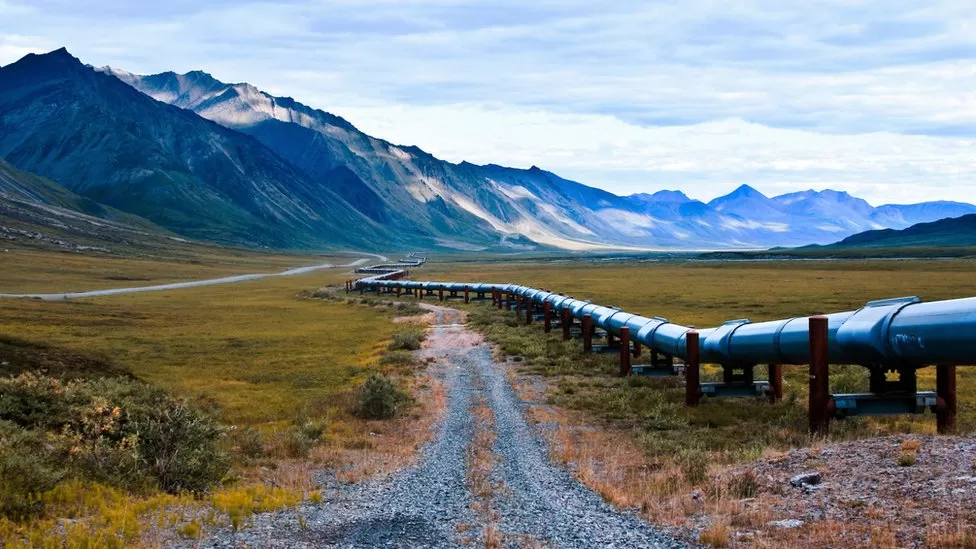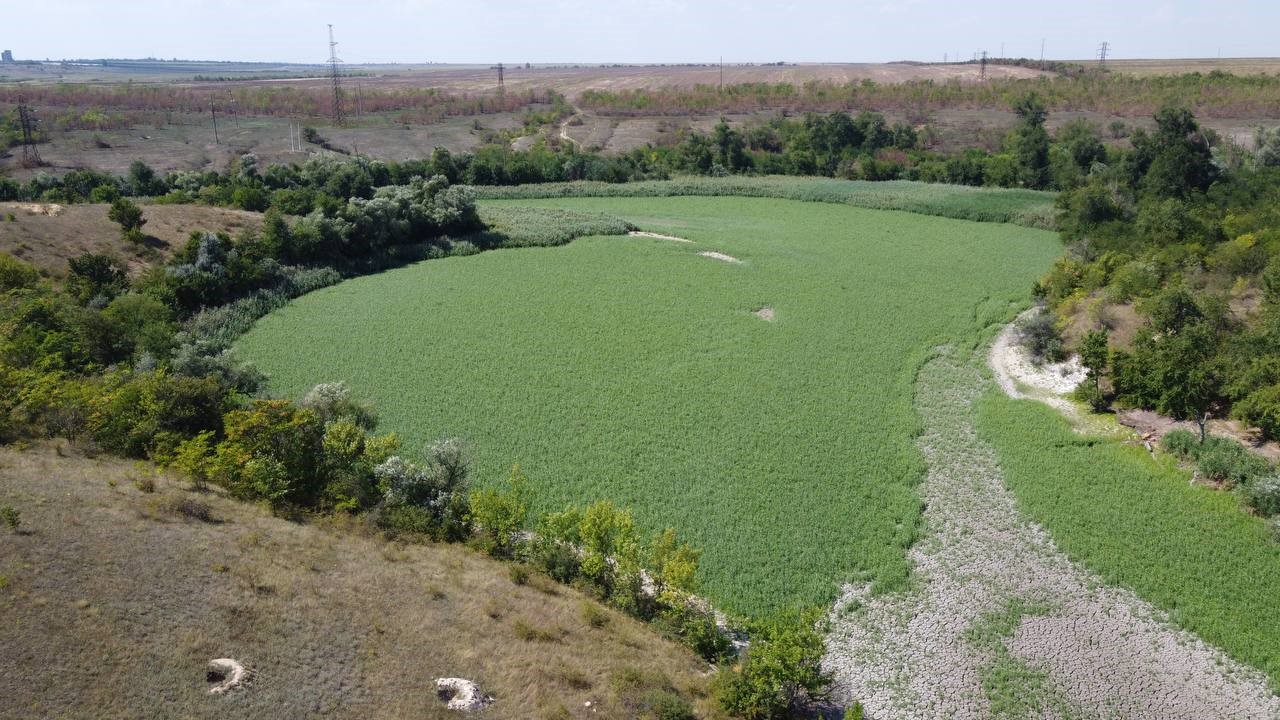Oleksiy Vasyliuk and Eugene Simonov
A year has passed since Russian troops sabotaged the Kakhovka hydropower dam, draining Kakhovka Reservoir and unleashing a catastrophic flood on the Lower Dnipro. Throughout this time UWEC experts have actively participated in discussions by scientists, environmental organizations, government agencies, and international partners about the future of the Lower Dnipro and the prospects for restoring and managing its ecosystems in the context of the ongoing war and European integration. We take a look back at some consequences of the Kakhovka disaster analyzed by UWEC experts over the past year and reflect on what might come next.
The biggest environmental shock of the war
Hydropower dams, often unsafe even in peacetime, become a weapon of mass destruction in times of war. The sabotage of the Kakhovka hydropower plant on Ukraine’s Dnipro River has become the most visible example of this phenomenon. In fact, environmentalists have argued that the simultaneous destruction of hundreds of millions of living organisms caused by the dam’s destruction should be considered as a basis for initiating a case of ecocide under a new article in international law (mass destruction of all living things).
The concept of ecocide has acquired global currency during the Russo-Ukrainian war. After the June 2023 destruction of Kakhovka Dam, in February 2024 the European Parliament passed a law making large-scale and intentional environmental damage “comparable to ecocide” a crime punishable by up to ten years in prison. All European Union (EU) members must introduce this ruling into their national legislation within two years. As of early 2024, there are growing calls for ecocide to be recognized as an international crime. The Russian attack on the Kakhovka hydropower plant has catalyzed global recognition of the concept of ecocide and itself clearly fits the definition.
Read more: On the path to international recognition of ecocide
Immediately after the dam’s destruction, it was clear that the land newly freed from the artificial reservoir has enormous potential for restoration of natural floodplain ecosystems. Work done by scientists and community organizations following the catastrophe was an attempt to get a feel for the right approach to take when it came to making decisions about the ecosystem restoration and the environmental management of local communities in the context of an ongoing war. After the disaster, 24 public environmental organizations from Ukraine and many other countries promptly called on the participants of an intergovernmental conference on the recovery of Ukraine to review development alternatives for the areas drained after the Kakhovka dam’s destruction in order to “start thinking outside the box” and develop “more sustainable solutions.”
Read more: Blasting of Kakhovka Dam: a “green choice” test in Ukraine’s revival efforts
First, it was important to assess the scale and consequences of the environmental changes associated with the hydropower plant’s destruction. UWEC experts identified two areas with very different impacts. The first zone begins just downstream from the dam in the village of Nova Kakhovka and extends across the entire Dnipro valley and the Dnipro-Bug estuary to the Black Sea. Here the main negative impact was a huge anthropogenic flood, which took more than 100 human lives, striking many inhabited settlements and developed sites, as well as more than 40 protected natural areas. The second zone is upstream of the former dam and spans the entire area formerly covered by Kakhovka Reservoir, the emptying of which irrevocably destroyed the artificial ecosystem of the reservoir itself, along with millions of its inhabitants.

Immediately after the catastrophe, the UWEC team carried out an analysis and forecast of harmful consequences and grouped mitigation options in the two impact areas. The majority of our forecasts turned out to be accurate, while some, fortunately, did not come to pass. For example, despite the concerns of UWEC experts, the drying bed of the reservoir did not become a source of dust storms.
Read more: Explosion of the Kakhovka hydropower plant: what are the environmental consequences?
Watch: Environmental consequences of the Kakhovka Dam explosion
Biodiversity, natural resources and land use in the past
At the same time, the newly exposed territory retained the features of riparian ecosystems lost in the Soviet era when the reservoir filled during construction of the Dnipro cascade of dams. Environmentalists have been overjoyed to see the rapid reappearance of Velykyi Luh (“Great Meadow”), a wooded, swampy floodplain meadowland and culturo-historical landscape tracing to the Zaporizhzhya Sich – the first Ukrainian state entity – alongside a multitude of other architectural heritage monuments.
Before construction of the hydropower plant began, this zone was home to hundreds of bird species. Schools of fish came here from the Black Sea to spawn, and the area contained no fewer than 90 historic settlements, which were wiped from the face of the earth when reservoir waters inundated them in the 1950s. Prior to that, humans and wildlife prospered in the wide Dnipro floodplain thanks to the region’s undisturbed ecological processes. The river regularly flooded, revitalizing its branches, channels, and lakes, bringing fertile silt to thousands of square kilometers of land, and giving rhythm to the life cycles of all the area’s animal and plant species. This was all destroyed when the gigantic shallow reservoir was filled; no less an act of ecocide than the catastrophic sabotage of the dam in 2023.

The ecosystems began to recover just a few weeks after the reservoir emptied. Satellite photos of the exposed bed indicate that the earlier network of channels, lakes and islands remained. Expeditions in 2023 and 2024 to different sectors of the former Kakhovka reservoir showed that native vegetation began to actively recover in some parts of the exposed bed barely a month after the draining of the reservoir. Willows and poplars already taller than humans have taken root. The abundant spring floods of 2024 demonstrated the fundamental importance of periodic flooding in order for these ecosystems to maintain their biological productivity and diversity. Specialists from Ukrainian Nature Conservation Group are currently researching older studies that describe the state of Velykyi Luh’s ecosystems before the area was submerged under the Kakhovka Reservoir. Such records will provide scientists an idea of the original natural complexes that were present and that could be restored.
Read more: Is it time to restore Velykyi Luh?

What practical steps can be taken now to restore the ecosystem?
At present the entire Lower Dnipro ecosystem lies on the frontline and within the warzone, substantially reducing opportunities for ecosystem monitoring and restoration activities.

With the exception of bays at the mouths of the river’s right-bank tributaries and the surroundings of the city of Zaporizhzhya, the former Kakhovka Reservoir and low-lying Dnipro valley are under fire from Russian artillery and snipers, limiting civilian activity and complicating monitoring of ecosystem dynamics. Additionally, the vast downstream Dnipro floodplains (Lower Dnipro National Park), severely damaged by the 2023 Kakhovka flood, are completely inaccessible for research.
For now, monitoring and recovery forecasting for vegetation on the site of the former reservoir rely mainly on satellite imagery analysis and surveying expeditions in areas formerly under water in Kamenska Sich National Park and Khortytsia Historical and Cultural Reserve. Specific conditions on the Dnipro floodplain make it most likely that native vegetation will recover. At the same time, the restoration of a number of typical plant communities, for example, floodplain oak forests, may be hindered by a lack of seed sources.
Expeditions in 2024 have shown that it is not only floodplain vegetation that is recovering, but also steppe vegetation, where plants grow on the exposed slopes of the banks of the former reservoir.
Further ecosystem restoration at the former Kakhovka Reservoir site will become possible as soon as the frontline retreats from the left bank of the Dnipro; national parks will also then be able to serve as a base for biodiversity monitoring. That work includes studying changes in the species composition of birds and mammals, as well as finding evidence of fish migration from the lower Dnipro to the Zaporizhzhya region. Before the hydropower plant was built, the Dnipro’s ichthyofauna included 70 species of fish, many of which made significant migrations.
It is no less important (though seriously complicated by the war) to monitor ecological changes in the Dnipro-Bug estuary and in the nearby waters of the Black Sea that ensue from rising waters along the Lower Dnipro following the sabotage of the Kakhovka Dam.
Today, restoration of the Dnipro floodplain complex depends on the pulsing flow of the river, a process that dams further upstream disrupt. Environmental flow releases (controlled discharges of water to support ecosystems) from upstream reservoirs must be permitted in order to maintain Lower Dnipro floodplain ecosystems. At present this is the primary focus of discussions between, on the one hand, environmental organizations and scientists, and, on the other, water departments, power engineers, and international banks financing modernization and restoration of the hydropower plant.
Read more: International banking projects and restoring the Lower Dnipro’s ecosystems

Emergency assistance for protected areas
More than 50 protected areas along the Lower Dnipro ended up either in an active combat zone or under Russian occupation, including Lower Dnipro National Park, Black Sea Biosphere Reserve, Biloberezhzhia Sviatoslava National Park, and Velykyi Luh National Park. Some protected areas were initially occupied but subsequently liberated, for example, Kamenska Sich National Park on the banks of the former reservoir.
Even after liberation, such areas still face problems such as active shelling and built fortifications, particularly those that found themselves on the frontline. Liberated protected areas prioritized for state-funded restoration, but have been used by government agencies to record crimes against the environment and calculate losses. As for fulfilling direct environmental responsibilities, parks and reserves lost supplies, personnel, and equipment during their occupation, and that, combined with land mines and military fortifications inside their boundaries and constant shelling, render them impossible to fulfill in most cases.
Ukrainian community organizations are working with international donors to develop effective assistance programs for protected areas, predominantly in territories liberated from occupation. Maintaining and developing the capacity of conservation institutions is a critical aspect of efforts to restore ecosystems and create conditions for long-term conservation management in key biodiversity areas.
Read more: Protected areas and war: 2 years of humanitarian aid
Lower Dnipro ‘green recovery’ haunted by the specter of a new dam
On 18 July 2023, the Cabinet of Ministers of Ukraine hastily issued a resolution prepared by hydropower engineers, proclaiming the intention to rebuild the Kakhovka dam and plant. The resolution is not at all founded on comparisons with any alternative options for restoring the country’s economy and environmental well-being in the context of the ongoing war, and includes no justification of why the option to rebuild the dam is better than possible alternatives. Incidentally, the Russian occupation authorities have also trumpeted their own plans to rebuild the Kakhovka hydropower plant.
The original 1950s gigantic facility had several purposes: generating electricity, increasing the depth of shipping routes, supplying water to cities and villages, and irrigating fields. There is not a single country in Europe that would today build a giant shallow reservoir with an area of 2,150 square kilometers to achieve such aims. The management system itself, based on wasteful use of water, is hopelessly outdated, not least when climate change is considered. Almost two cubic kilometers of water are lost from the reservoir each year due to evaporation. Half of the Dnipro’s flow is used for irrigation, but most of the water evaporates in the canals without ever reaching crops. This, in turn, drives soil salinization and degradation in steppe grasslands previously converted for agricultural use.
Recreating a 20th-century power plant is not only expensive, but also outdated compared to modern agricultural practices and technologies, as well as today’s completely different needs and opportunities, not to mention the imperatives of climate adaptation. For example, a maximum of 25 square kilometers of solar power arrays are required to generate comparable volumes of energy relative to the rebuilt hydropower plant’s production (500 MW), i.e. an area 100 times smaller than land occupied by the reservoir. Unlike hydropower plants, solar generation can now be dispersed, making solar power plant sites radically less vulnerable to enemy shelling.
Read more: Risks and opportunities of distributed electricity generation in Ukrainе
The difference between hydropower plants and solar power plants partially illustrates that any restoration of the pre-sabotage status quo reservoir will become possible only in 10-15 years, after the end of the war, when the majority of local communities that once depended on the supply of water and electricity from the Kakhovka hydropower plant will already be supplied with both water and energy from alternative sources.
To ensure that the area around Velykyi Luh is developed sustainably, it is imperative that planners explore alternative approaches to meet the socio-economic needs previously served by the reservoir including considering the war’s impacts, climate change, and advances in land and water management. Local communities cannot wait decades for “the conditions to be ripe” to recreate a questionable past; Ukraine’s green recovery must begin here and now, and it must be based on modern realities and new opportunities.
Read more: Rebuilding the Kakhovka Dam is a mistake, but what should be done instead?
Kakhovka: recruiting support for green recovery
When it comes to planning for the lands that replaced the former Kakhovka Reservoir, environmental NGOs’ main role is related to advocating for public opinion to encourage direct and indirect support for restoration of the Lower Dnipro and Velykyi Luh ecosystems. Fourteen Ukrainian community organizations have united into a coalition they named Kakhovka Platform. The coalition aims to develop comprehensive solutions for restoring the areas around the Kakhovka hydropower plant. They have appealed to Ukraine’s prime minister to consider alternatives to rebuilding the giant reservoir.
Environmentalists must also prioritize supporting influential advocates for ecosystem restoration, particularly those able to engage in dialogue with the industrial lobby and its government backers on an equal footing. The good news is that over the past year there have been increasing numbers of stakeholders demanding that alternatives to rebuilding the Kakhovka Dam and hydropower plant be considered. It is particularly encouraging that these alternatives represent a wide variety of positions: from the modernization of energy and agriculture to protection of this large ecosystem as a climate adaptation measure.
The Environmental Compact for Ukraine, proposed on 31 January 2024 by the High-Level Working Group on the Environmental Consequences of War, a Ukrainian presidential initiative, is an important indication that the value of considering alternatives is recognized in the highest echelons of government. It states:
“The future of the Kakhovka Dam is one of the examples which continues to be discussed in mass media by scientists and civil society experts. The government previously announced its intentions to restore the dam. At the same time, some interesting compromise solutions were developed which are deserving of attention – the construction of a smaller dam, for example. It is recommended to involve independent experts for careful analysis of the options and the environmental consequences associated with them, given the significant scale of this project and its long-term and multifaceted ramifications.”
However, this has not stopped attempts by the authorities to shut down public discussion of hydropower plant restoration projects as part of the environmental impact assessment and to ban the use of the reservoir bed by local communities for 15 years, including for grazing and haymaking.
In order to effectively promote plans to restore Lower Dnipro ecosystems, there is also a need to identify allies to implement the most beneficial economic restoration scenarios for nature and local communities. This strategy is impossible to employ without maintaining and developing democratic decision-making procedures, especially public discussions of the social and environmental consequences of economic projects.
Read more: Ukrainian environmentalists unite against reconstruction of Kakhovka Dam
European dimension of restoring the Lower Dnipro
European and global programs and plans are rapidly recognizing and incorporating the need to generally restore rivers and natural ecosystems. The starting point was the 2015 signing of the 2030 Agenda for Sustainable Development by all 193 members of the United Nations. In Ukraine, the agreement’s Sustainable Development Goals (SDGs) were formally enshrined by a presidential decree signed by Volodymyr Zelensky in 2019 and are now mandatory policy. In particular, Goals 14.2, 15.1, 15.2, and 15.3 concern the need to ensure the conservation, restoration, and sustainable use of terrestrial and inland freshwater ecosystems and their services.
Similarly, the Kunming-Montreal Global Biodiversity Framework identified 23 global tasks to achieve by 2030 (Kunming-Montreal 2030 Global Targets), including to “ensure that by 2030 at least 30 percent of areas of degraded terrestrial, inland water, and marine and coastal ecosystems are under effective restoration, in order to enhance biodiversity and ecosystem functions and services, ecological integrity, and connectivity.”
The Bern Convention on the Conservation of European Wildlife and Natural Habitats stipulates that the total area of (natural) ecosystems be increased to 30 percent of all land on the continent by 2030. In Europe, the practical achievement of these objectives was to be facilitated by the EU Nature Restoration Law, agreed upon on 27 February 2024. According to the law, EU member states will introduce effective measures for nature restoration with the goal of jointly at least 20 percent of land areas and at least 20 percent of sea areas by 2030, as well as restoring 25,000 kilometers of European rivers previously fragmented by dams.
In the context of European integration, the use of new EU legislation and programs for the restoration of natural ecosystems is particularly promising, and this can, in turn, support efforts in planning and legal support for the restoration of the Lower Dnipro ecosystem, from the Dnipro hydropower power plant at Zaporizhzhia to the Black Sea. Success in restoring the great river’s ecosystems largely depends on leading European environmental organizations and the European Commission’s environmental bodies participating in this process.

Restoring natural freshwater ecosystems along a 250-kilometer stretch of the Lower Dnipro could be the largest project of its kind in Europe and has the potential to become Ukraine’s decisive contribution to meeting EU commitments to restore rivers to their natural state by 2030.
Rebuilding the hydropower plant, on the other hand, will mark a return to the past and a missed opportunity for a green renaissance.
Translated by Alastair Gill
Main image: Panoramas of Velykyi Luh, Zaporizhzhya Oblast, showing the recovery of the vast meadowland Source: Eva Mironova, @61_Elelna








“У гігантського об’єкта, побудованого в 1950-ти роки, було кілька призначень: виробництво електроенергії, збільшення глибини суднового ходу, водопостачання міст і сіл, зрошення полів.” Це неповний список призначень. До уваги потрібно брати мілітаризм країни рад, як наріжний камінь його ідеології та кінцевої мети побудови комунізму в планетарному масштабі. Будівництво Дніпрогесу напряму пов’язане з мілітаризмом. 50-60 роки припадають на вершину протистояння “холодної” війни,що неодноразово могла перейти в “гарячу” фазу. Дніпровський каскад ГЕС. для москви, в першу чергу був нездоланною фортифікаційною спорудою для танкових армій противника. Подрив дамби унеможливив проведення активних операцій ЗСУ на півдні. Самі ГЕС (машинні зали та енергетичне обладнання) виявилися вразливими і по факту маємо лише каскад озер.